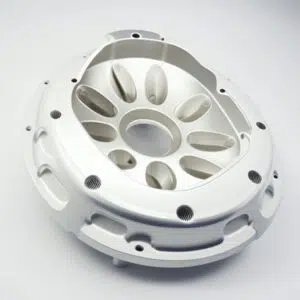# Precision CNC Machining Services for Custom Parts Manufacturing
## What Are CNC Machining Services?
CNC machining services refer to the process of using computer numerical control (CNC) machines to manufacture custom parts with high precision. These machines follow programmed instructions to cut, shape, and form materials into desired components. CNC machining has revolutionized the manufacturing industry by offering unparalleled accuracy, repeatability, and efficiency in part production.
## The Advantages of Precision CNC Machining
Precision CNC machining offers numerous benefits for custom parts manufacturing:
– Exceptional accuracy with tolerances as tight as ±0.001 inches
– Consistent quality across large production runs
– Ability to work with various materials including metals, plastics, and composites
– Faster production times compared to manual machining
– Complex geometries that would be impossible with conventional methods
– Reduced material waste through optimized cutting paths
## Materials Used in CNC Machining Services
Our CNC machining services can work with a wide range of materials to meet your specific requirements:
### Metals
– Aluminum (6061, 7075, etc.)
– Stainless steel (303, 304, 316, etc.)
– Titanium
– Brass
– Copper
– Tool steels
### Plastics
– ABS
– Polycarbonate
– PEEK
– Nylon
– Delrin
– PTFE
## Applications of CNC Machined Parts
Precision CNC machining services find applications across numerous industries:
Aerospace: Critical components for aircraft and spacecraft that demand the highest levels of precision and reliability.
Medical: Surgical instruments, implants, and diagnostic equipment requiring sterile, biocompatible materials.
Automotive: Engine components, transmission parts, and custom automotive accessories.
Electronics: Housings, heat sinks, and connectors for electronic devices.
Industrial: Machinery parts, tooling, and equipment components for various manufacturing processes.
## Our CNC Machining Capabilities
Our facility is equipped with state-of-the-art CNC machines to handle your most demanding projects:
– 3-axis, 4-axis, and 5-axis CNC milling
– CNC turning (lathe operations)
– Swiss machining for small, precision parts
– Multi-spindle machining for high-volume production
– EDM (Electrical Discharge Machining) for hard metals
– Wire EDM for intricate cuts
## Quality Assurance in CNC Machining
We maintain strict quality control measures throughout our CNC machining process:
All parts undergo thorough inspection using coordinate measuring machines (CMM), optical comparators, and other precision measurement tools.
Our quality management system is ISO 9001 certified, ensuring consistent adherence to international standards.
First article inspection reports are provided for all new parts to verify conformance to specifications.
Material certifications are available upon request to guarantee material traceability and properties.
## Why Choose Our CNC Machining Services?
When you partner with us for your custom parts manufacturing needs, you benefit from:
– Decades of combined machining experience
– State-of-the-art equipment and software
– Quick turnaround times without compromising quality
– Competitive pricing with no hidden costs
– Dedicated project management from quote to delivery
– Flexible production volumes from prototypes to mass production
## Getting Started with Your CNC Machining Project
Initiating your custom parts manufacturing project is simple:
1. Submit your CAD files (STEP, IGES, or SolidWorks preferred)
2. Receive a comprehensive quote within 24 hours
3. Approve the design and production plan
4. We manufacture your parts with precision
5. Parts are shipped to your location with full documentation
Contact our team today to discuss how our precision CNC machining services can bring your custom part designs to life with unmatched quality and efficiency.
